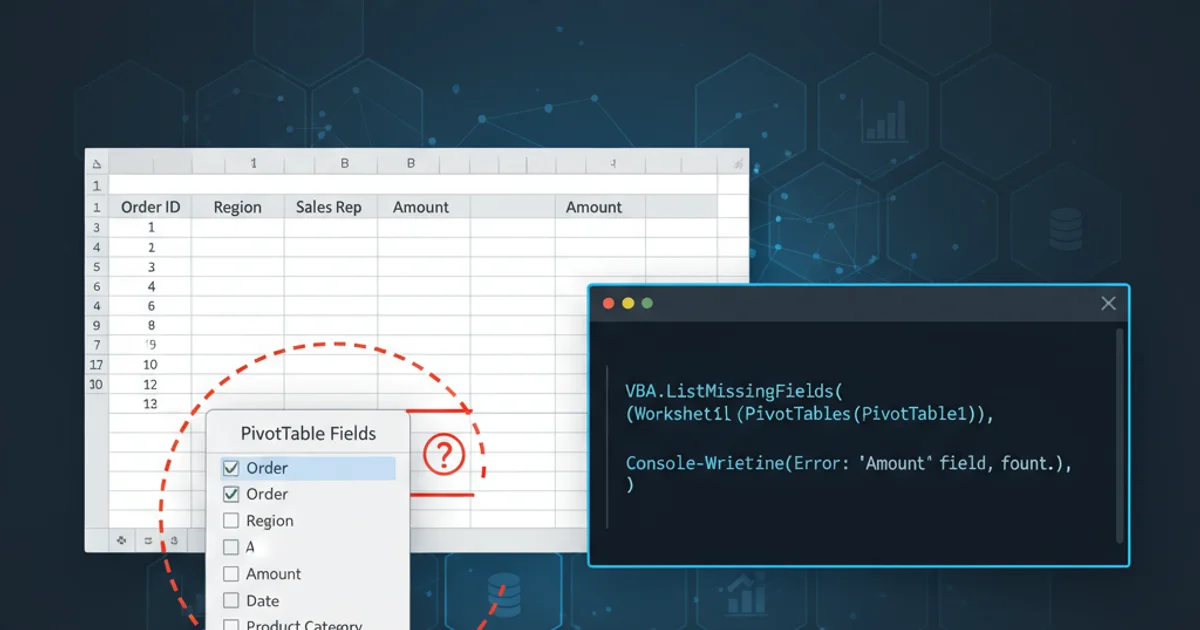Is there a way to edit a formula in vba
Categories:
Editing Excel Formulas with VBA: A Comprehensive Guide

Learn how to programmatically read, modify, and write Excel formulas using VBA, enhancing automation and dynamic spreadsheet management.
Microsoft Excel's Visual Basic for Applications (VBA) provides powerful capabilities to automate tasks and interact with spreadsheet elements. One common requirement is to programmatically edit cell formulas. Whether you need to update references, change functions, or dynamically generate complex formulas, VBA offers several methods to achieve this. This article will guide you through the different approaches to manipulate formulas using VBA, from simple assignments to more advanced techniques.
Understanding Formula Properties in VBA
In VBA, a cell's formula can be accessed and modified through various properties of the Range object. The most commonly used properties are Formula, FormulaR1C1, and FormulaLocal. Understanding the distinction between these is crucial for effective formula manipulation.
flowchart TD
A[Start] --> B{"Select Cell/Range"}
B --> C{"Choose Formula Property"}
C --> D{"Formula (A1 Style)"}
C --> E{"FormulaR1C1 (R1C1 Style)"}
C --> F{"FormulaLocal (Localized A1 Style)"}
D --> G[Read/Write Formula String]
E --> G
F --> G
G --> H[End]Flowchart of VBA Formula Property Selection
FormulaLocal is often the safest choice for reading and writing formulas that contain localized function names or argument separators.Basic Formula Assignment
The simplest way to edit a formula is by directly assigning a new string value to the Formula or FormulaR1C1 property of a Range object. This overwrites any existing formula or value in the cell.
Sub AssignFormulaA1()
' Assign a formula using A1 reference style
Range("A1").Formula = "=SUM(B1:B10)"
' Assign a formula using R1C1 reference style
Range("A2").FormulaR1C1 = "=SUM(R[0]C[1]:R[9]C[1])"
' Assign a localized formula (e.g., in German Excel, SUMME instead of SUM)
' Note: This depends on the Excel version's locale settings
Range("A3").FormulaLocal = "=SUMME(C1:C10)"
End Sub
Basic formula assignment using different reference styles.
Modifying Parts of an Existing Formula
To modify only a portion of an existing formula, you first need to read the current formula, perform string manipulation, and then write the modified formula back to the cell. This approach is useful for updating cell references, changing function arguments, or replacing specific text within a formula.
Sub ModifyExistingFormula()
Dim currentFormula As String
Dim newFormula As String
' Ensure there's a formula to modify
Range("D1").Formula = "=VLOOKUP(A1,B:C,2,FALSE)"
' Read the current formula
currentFormula = Range("D1").Formula
' Replace a part of the formula (e.g., change lookup range)
newFormula = Replace(currentFormula, "B:C", "E:F")
' Write the modified formula back
Range("D1").Formula = newFormula
MsgBox "Formula in D1 changed from " & currentFormula & " to " & newFormula
End Sub
Example of reading, modifying, and writing a formula using string functions.
Replace, be cautious about potential unintended replacements if the search string appears elsewhere in the formula. Consider using more precise methods or regular expressions for complex patterns.Dynamic Formula Generation with Variables
VBA's strength lies in its ability to use variables to construct formulas dynamically. This is particularly useful when formulas need to adapt based on user input, data ranges, or other programmatic logic.
Sub DynamicFormulaGeneration()
Dim startRow As Long
Dim endRow As Long
Dim targetColumn As String
Dim formulaString As String
' Assume these values are determined dynamically
startRow = 5
endRow = 15
targetColumn = "G"
' Construct the formula string using variables
formulaString = "=AVERAGE(" & targetColumn & startRow & ":" & targetColumn & endRow & ")"
' Assign the dynamically generated formula to a cell
Range("A1").Formula = formulaString
MsgBox "Dynamically generated formula: " & formulaString
End Sub
Generating a formula string dynamically using VBA variables.
1. Identify the Target Cell
Determine which cell or range of cells you want to apply or modify the formula in. Use Range("A1") or Cells(row, column).
2. Choose the Formula Property
Decide between .Formula (A1 style), .FormulaR1C1 (R1C1 style), or .FormulaLocal (localized A1 style) based on your needs and the formula's complexity.
3. Construct the Formula String
Create the formula as a string. For dynamic formulas, concatenate strings and variables. Ensure correct syntax, including the leading equals sign (=).
4. Assign the Formula
Assign the constructed formula string to the chosen property of the Range object (e.g., Range("A1").Formula = "=SUM(B1:B10)").
5. Test and Verify
Run your VBA code and verify that the formula is correctly applied and calculates as expected in Excel.